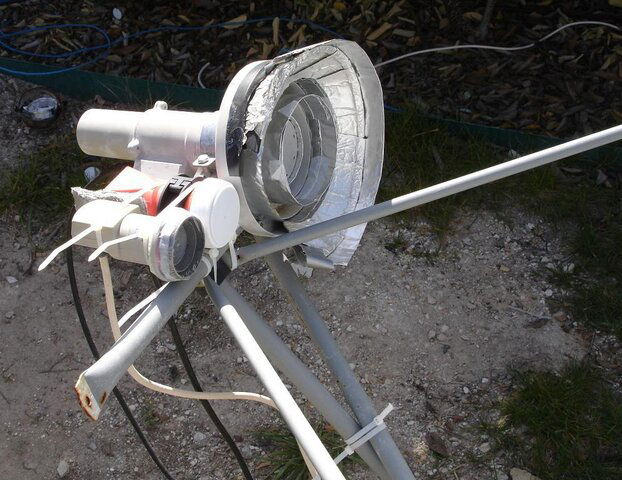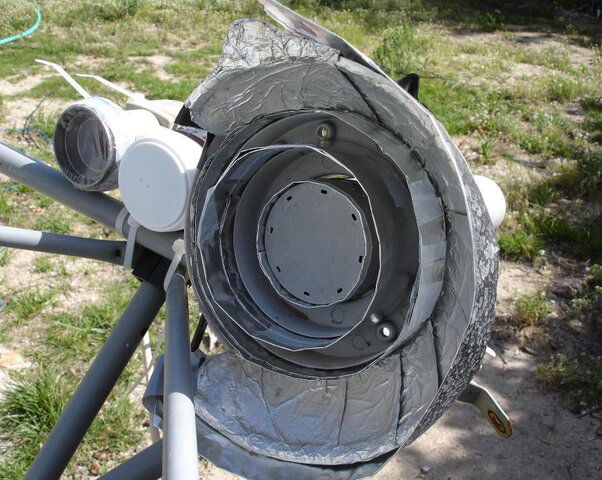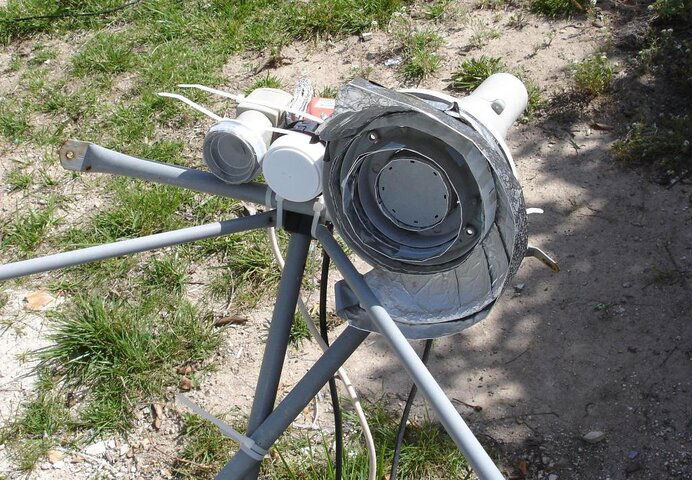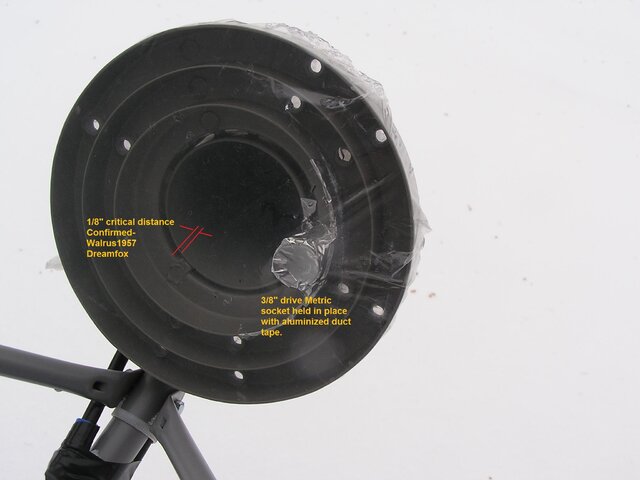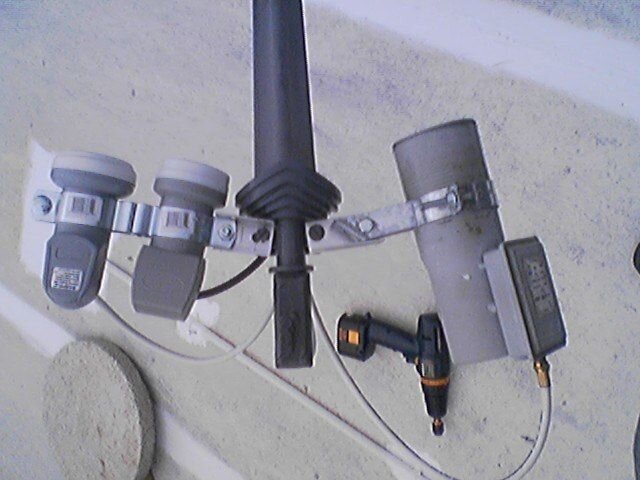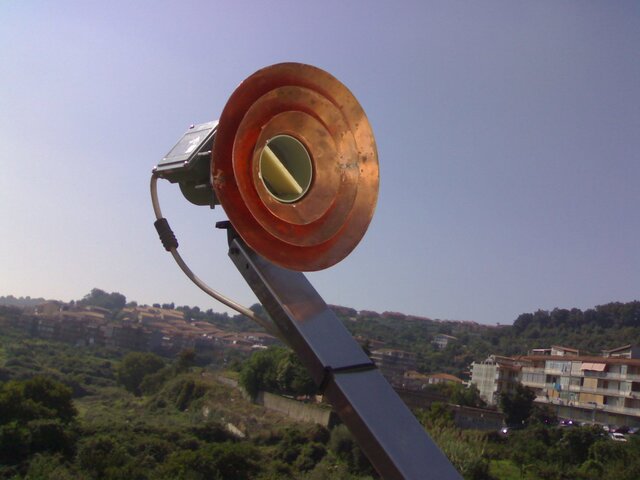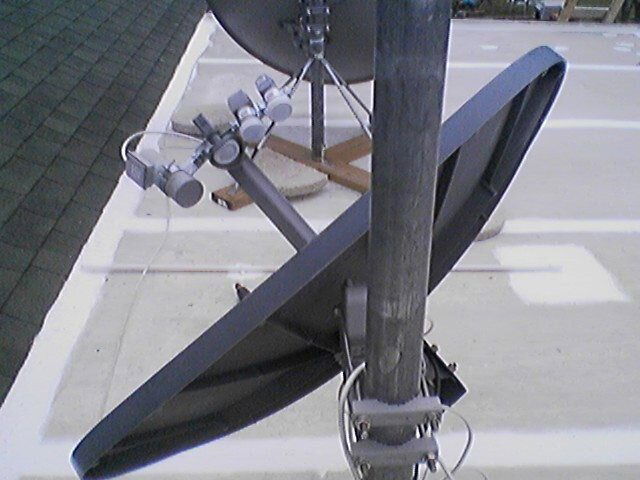A few days ago I posted that I could get a DVB-S2 transponder on my miniBUD setup and I was asked to post a picture of my recent modifications to my C-Band scalar ring.
Recently I have read many posts where others who are using miniBUD setups are getting better results with a flat scalar ring versus a conical scalar ring. I am not sure why that is, in theory it should not be the case, and it is not the case for me.
My setup might be an exception because my C-Band LNB is not at the center of the dish. I am using a C-Band LNB with a 17°K noise figure.
I have not tried my modified scalar ring at the center of the dish. When I tried the flat scalar ring at the center of the dish my reception was about the same, as being on the side.
The modification that I have made to the scalar ring is that I have added aluminum foil to the flat scalar ring to make it more similar to a conical scalar ring. I decided on the size of the foil rings by watching the signal quality on a weak transponder change as I changed the size and position of the foil rings.
With this modification my signal quality is much higher (some transponders on the Pansat quality meter go from 30% to 45%) and weak C-Band transponder are stabilized. I can also lock two DVB-S2 transponders with this modification, one with a FEC of 3/5 and the other one with 5/6 (Data transponder). I do not have a way to blind scan DVB-S2 transponder, so I have only tried some transponders that have been posted.
Since I last posted my setup in 2007 (My miniBUD Setup), I have swapped the Universal LNB to a Standard LNB to speed up blind scans and I have swapped the Circular LNB to a universal LNB. (For 53°W and 58°W)
Recently I have read many posts where others who are using miniBUD setups are getting better results with a flat scalar ring versus a conical scalar ring. I am not sure why that is, in theory it should not be the case, and it is not the case for me.
My setup might be an exception because my C-Band LNB is not at the center of the dish. I am using a C-Band LNB with a 17°K noise figure.
I have not tried my modified scalar ring at the center of the dish. When I tried the flat scalar ring at the center of the dish my reception was about the same, as being on the side.
The modification that I have made to the scalar ring is that I have added aluminum foil to the flat scalar ring to make it more similar to a conical scalar ring. I decided on the size of the foil rings by watching the signal quality on a weak transponder change as I changed the size and position of the foil rings.
With this modification my signal quality is much higher (some transponders on the Pansat quality meter go from 30% to 45%) and weak C-Band transponder are stabilized. I can also lock two DVB-S2 transponders with this modification, one with a FEC of 3/5 and the other one with 5/6 (Data transponder). I do not have a way to blind scan DVB-S2 transponder, so I have only tried some transponders that have been posted.
Since I last posted my setup in 2007 (My miniBUD Setup), I have swapped the Universal LNB to a Standard LNB to speed up blind scans and I have swapped the Circular LNB to a universal LNB. (For 53°W and 58°W)


